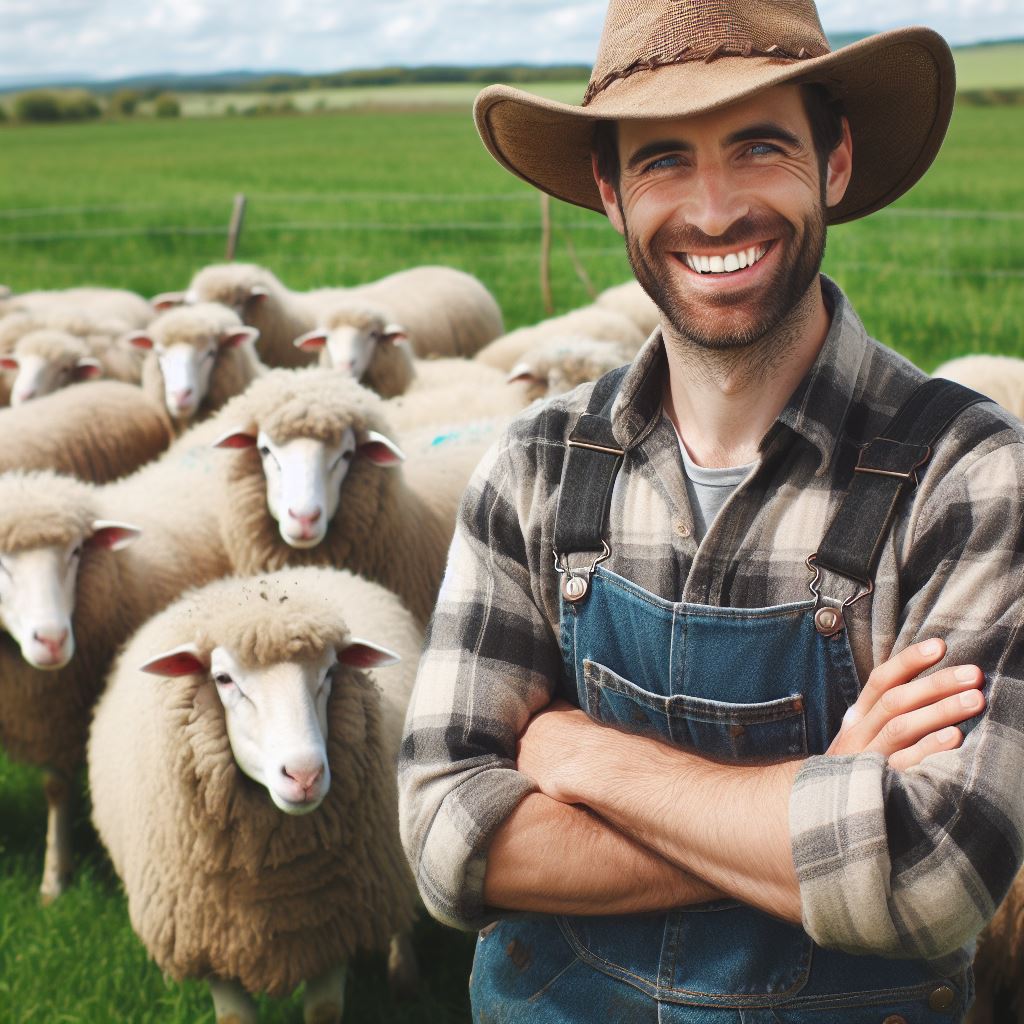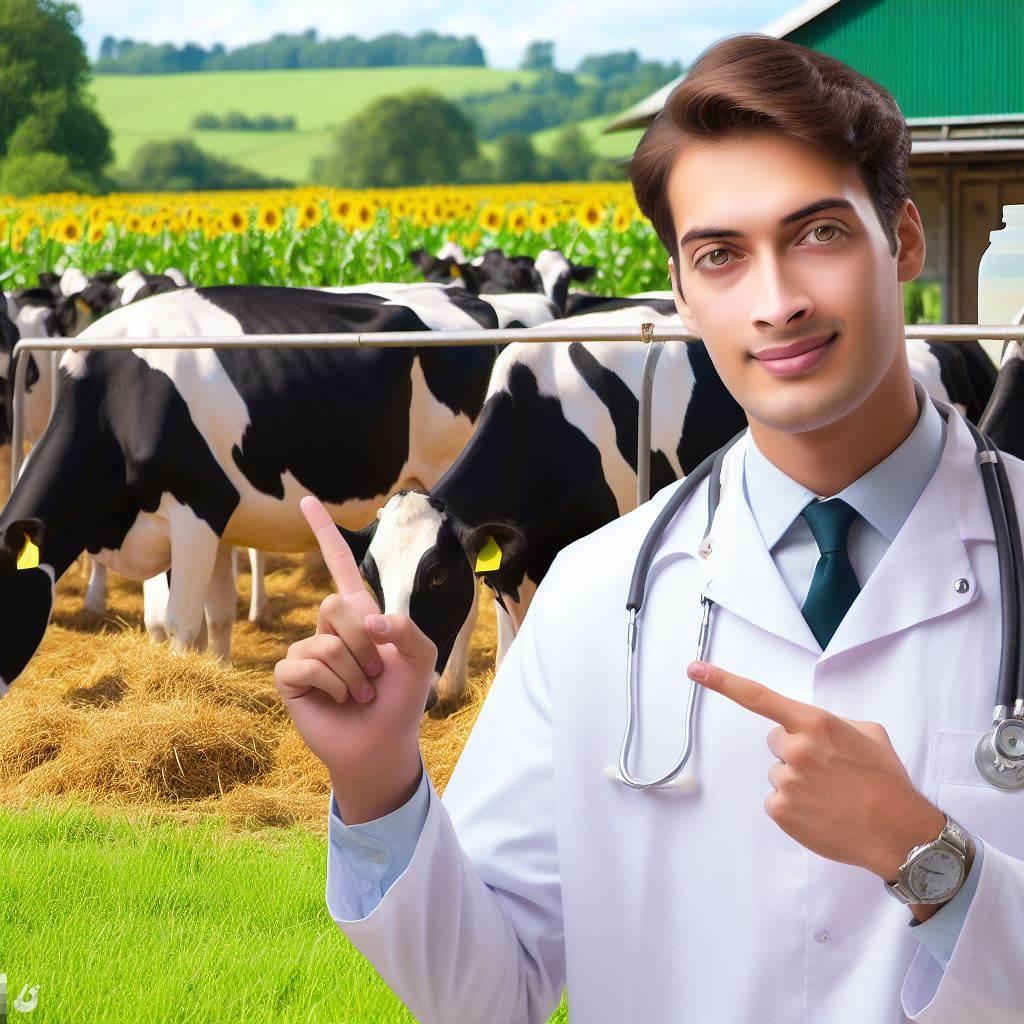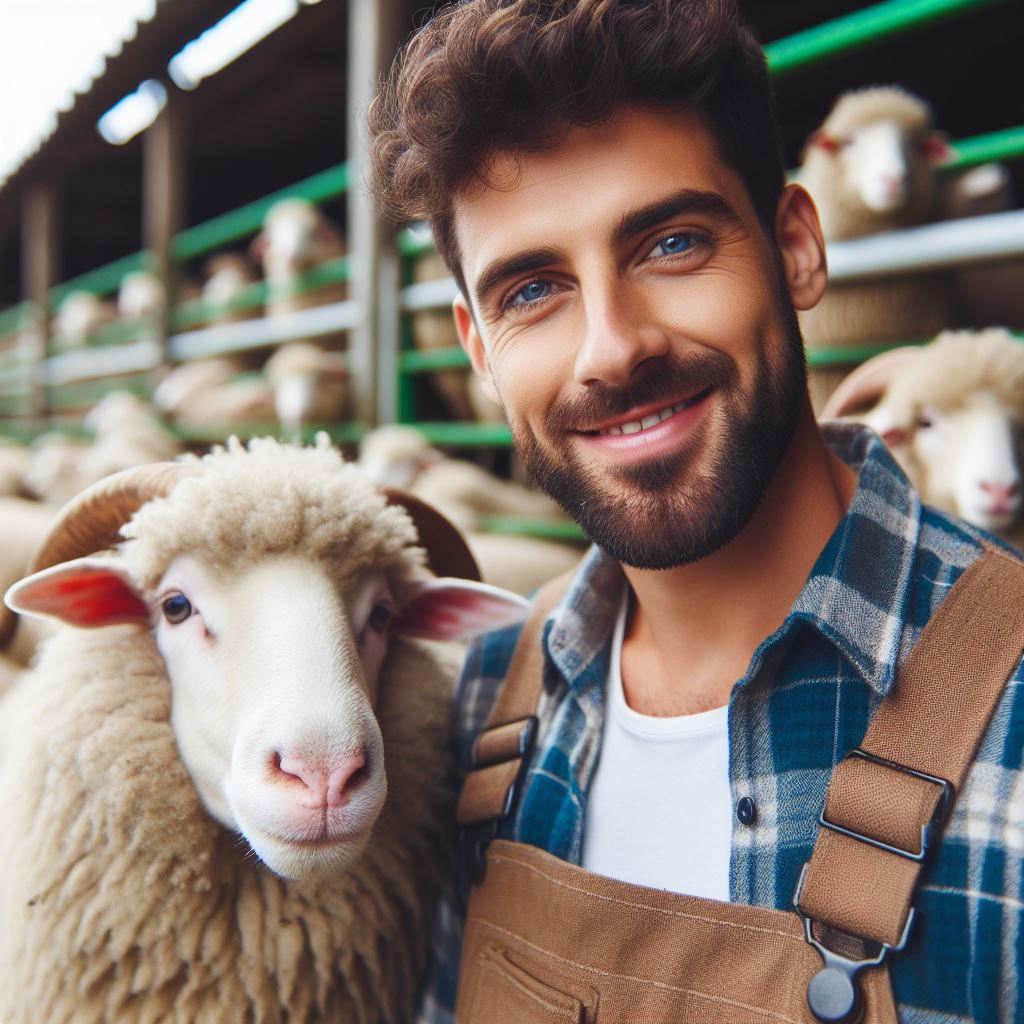Introduction
Holistic cattle care techniques play a crucial role in ensuring the health and well-being of cattle.
These techniques go beyond traditional veterinary approaches to focus on the overall balance and harmony of the animals.
Importance of holistic cattle care techniques
Holistic cattle care techniques are essential as they promote natural healing, prevent diseases, and reduce the need for antibiotics.
They emphasize proactive measures to maintain the cattle’s health and prevent illness from occurring.
Overview of key components of holistic cattle care
- Nutrition: A balanced diet that includes high-quality forage and proper mineral supplementation is vital for the overall well-being of cattle. It ensures they get the necessary nutrients for growth, reproduction, and immune system function.
- Pasture management: Proper grazing management and rotational grazing practices help optimize the cattle’s nutrition, prevent overgrazing, and maintain the health of the pasture.
- Stress reduction: It is crucial to minimize stress in cattle to enhance their immune system and reduce the risk of diseases. Providing them with a comfortable and low-stress environment promotes overall well-being.
- Herbal remedies: Using natural herbs and plant-based products can aid in cattle’s health maintenance and treatment of various ailments. These remedies help support the body’s natural healing processes.
- Alternative therapies: Techniques such as acupuncture and chiropractic care can be utilized to address specific health issues and improve the overall wellness of the cattle.
Therefore, holistic cattle care techniques are integral in promoting the overall health, well-being, and productivity of cattle.
By focusing on a holistic approach, cattle farmers can ensure the long-term sustainability and success of their operations.
Understanding Holistic Cattle Care
Definition and Principles of Holistic Cattle Care
Holistic cattle care refers to an approach that promotes the overall well-being of cattle by considering their physical, mental, and emotional needs.
It emphasizes treating the animal as a whole, rather than focusing solely on specific symptoms or diseases.
The principles of holistic cattle care involve addressing the root causes of health issues, rather than just treating the symptoms.
It emphasizes prevention through proactive management practices, such as proper nutrition, stress reduction, and natural herd socialization.
Contrast with Conventional Cattle Care Practices
In contrast to conventional cattle care practices, which often rely heavily on medications and chemical interventions, holistic cattle care takes a more natural and sustainable approach.
It recognizes that cattle are best suited to thrive in their natural environments and aims to create conditions that mimic those environments as closely as possible.
Conventional practices focus on maximizing production and may involve the use of hormones, antibiotics, and other chemicals to increase growth rates and prevent diseases.
However, these practices can have negative impacts on the animal’s health and the environment.
Benefits of Adopting a Holistic Approach
Adopting a holistic approach to cattle care offers several benefits.
Transform Your Agribusiness
Unlock your farm's potential with expert advice tailored to your needs. Get actionable steps that drive real results.
Get StartedFirstly, it promotes animal welfare by prioritizing the overall health and happiness of the cattle.
This can result in reduced stress levels, improved immune systems, and higher resistance to diseases.
Secondly, holistic cattle care practices are more environmentally sustainable.
By minimizing the use of chemicals and allowing cattle to live in a natural environment, the impact on ecosystems and waterways is significantly reduced.
Furthermore, holistic cattle care can also be economically beneficial.
By focusing on preventive measures and early intervention, producers can reduce the need for costly treatments and medications.
This approach can lead to improved productivity and profitability in the long run.
Most importantly, holistic cattle care is an approach that emphasizes the overall well-being of cattle by considering their physical, mental, and emotional needs.
It contrasts with conventional practices by focusing on prevention, natural management techniques, and minimizing chemical interventions.
Adopting a holistic approach offers various benefits, including improved animal welfare, environmental sustainability, and economic viability.
By embracing these principles, cattle producers can contribute to healthier, happier cattle and a more sustainable future for the industry.
Read: Green Goat Farming Methods
Nutritional Management
Importance of a balanced and natural diet
- Provide cattle with a balanced and natural diet to optimize their health and well-being.
- A balanced diet ensures proper growth, reproduction, and overall performance of the cattle.
- Natural diet means feeding cattle with food that they would consume in their natural habitats.
- A natural diet includes grass, forage, and other plant-based foods that are rich in nutrients.
- Feeding a balanced and natural diet helps prevent nutritional deficiencies and promotes strong immune systems.
Incorporating pasture rotation and diverse forage options
- Implement pasture rotation to optimize cattle’s access to diverse forage options.
- Pasture rotation prevents overgrazing in one area, allowing the grass to regrow naturally.
- Diverse forage options ensure that cattle receive a variety of nutrients from different types of plants.
- Different plants offer a wide range of vitamins, minerals, and antioxidants essential for cattle’s health.
- Grazing on diverse forage options also reduces the risk of nutrient imbalances and promotes healthier digestion.
Minimizing the use of artificial supplements and hormones
- Avoid relying heavily on artificial supplements and hormones for cattle nutrition.
- Artificial supplements can disrupt the natural balance of nutrients in a cattle’s diet.
- Overreliance on hormones can lead to long-term health issues in cattle.
- Instead, focus on providing cattle with a well-rounded and nutrient-dense diet from natural sources.
- Natural sources of nutrition, such as high-quality pasture and diversely grown forage, are more beneficial for cattle’s overall well-being.
Read: Organic Poultry: Best Practices
Preventive Healthcare Measures
Regular monitoring and observation of cattle health
Regularly monitor and observe the health of your cattle to detect any signs of illness or distress.
Implement a system of daily checks and keep records of any abnormalities or changes in behavior.
This will allow you to quickly identify and address any health issues before they become serious.
Focus on maintaining proper body condition score
Pay attention to the body condition score of your cattle to ensure they are in optimal health.
Monitor their weight, body fat, and muscle tone to determine if they are receiving adequate nutrition.
Adjust their diet or grazing practices as necessary to maintain a healthy body condition score.
Natural parasite control methods
Utilize natural methods to control parasites in your cattle, such as rotational grazing and biological controls.
Implement a strategic deworming program based on fecal egg counts to minimize chemical treatments.
This will help prevent the development of resistance in parasites and reduce the use of synthetic dewormers.
Vaccination and deworming protocols
Develop a vaccination and deworming protocol in consultation with your veterinarian.
Administer vaccines to protect against common diseases and follow appropriate deworming schedules.
Showcase Your Farming Business
Publish your professional farming services profile on our blog for a one-time fee of $200 and reach a dedicated audience of farmers and agribusiness owners.
Publish Your ProfileRegularly review and update these protocols based on the specific needs and disease risks of your herd.
By implementing these preventive healthcare measures, you can ensure the overall well-being and longevity of your cattle.
Regular monitoring and observation, along with maintaining a proper body condition score, will enable you to quickly address any health issues.
Implementing natural parasite control methods and following vaccination and deworming protocols will further protect your cattle from diseases and parasites.
Remember, proactive healthcare is key to preventing illnesses and maintaining optimum herd health.
By taking these measures, you can minimize the need for extensive treatments and veterinary interventions.
Investing time and effort into preventive care will ultimately lead to healthier, happier cattle and a more sustainable farming operation.
In the next section, we will dive into the topic of nutrition and feeding practices for holistic cattle care. Stay tuned!
Read: Ethical Pig Farming Essentials

Stress Reduction Techniques
Providing a low-stress environment for cattle
A low-stress environment is essential for the overall well-being and health of cattle.
To achieve this, it is important to ensure that their surroundings are calm and free from unnecessary disturbances.
Noise reduction techniques, such as using soundproof insulation in barns, can help create a tranquil atmosphere.
Minimizing sudden loud noises, such as banging of gates, can significantly reduce stress levels in cattle.
Additionally, providing ample space within their living areas allows cattle to move freely and prevents overcrowding.
Cattle that are cramped and confined are more likely to experience stress-related health issues.
Placing comfortable bedding, such as straw or rubber mats, can further enhance their living conditions and minimize stress.
Ensuring good ventilation and proper temperature control is vital as extreme heat or cold can cause stress.
By maintaining a stress-free environment, cattle can thrive and exhibit improved overall health and productivity.
Avoiding overcrowding and implementing proper stocking density
Overcrowding cattle can lead to various physical and psychological health problems.
To prevent this, it is important to implement proper stocking density guidelines.
The recommended stocking density varies depending on factors such as breed, age, and living conditions.
Consulting with experts or veterinarians can provide valuable insights into determining the appropriate stocking density.
Adequate space allows cattle to move freely, exhibit natural behaviors, and reduce competition for resources.
Preventing overcrowding also minimizes the risk of injuries and the spread of diseases within the herd.
Regularly monitoring and adjusting stocking density based on the cattle’s needs and growth is essential for their well-being.
By avoiding overcrowding, cattle can experience reduced stress levels and improved overall health and productivity.
Utilizing quiet handling techniques during transportation and handling
The way cattle are handled during transportation and handling can significantly impact their stress levels.
Utilizing quiet handling techniques can minimize stress and ensure their well-being.
It is important to remain calm and composed when working with cattle.
Sudden movements or loud noises can startle them and cause unnecessary stress.
Using gentle and slow movements, particularly when loading and unloading cattle, can keep stress levels to a minimum.
Providing a well-designed loading and unloading facility helps reduce the stress associated with these processes.
Good lighting is important, as it allows cattle to see clearly and reduces their fear and anxiety.
Avoiding the use of electric prods or excessive force when handling cattle is essential for their well-being.
Using positive reinforcement techniques and rewards can help create a calm and cooperative environment during handling.
By implementing quiet handling techniques, cattle can experience reduced stress and improved overall welfare.
Through providing a low-stress environment, avoiding overcrowding, and utilizing quiet handling techniques, we can effectively reduce stress levels in cattle.
These techniques contribute to their overall well-being, health, and productivity.
By implementing these strategies, we can ensure that our cattle receive the best care possible, leading to a successful and sustainable cattle farming operation.
Read: Sustainable Sheep Rearing Tips
Showcase Your Farming Business
Publish your professional farming services profile on our blog for a one-time fee of $200 and reach a dedicated audience of farmers and agribusiness owners.
Publish Your ProfileHolistic Handling and Behavior Management
Proper handling and behavior management are crucial aspects of holistic cattle care techniques.
By understanding natural cattle behavior, implementing proper handling methods, and incorporating positive reinforcement training, cattle farmers can ensure the well-being and productivity of their herds.
Understanding natural cattle behavior
To effectively manage cattle behavior, it is essential to have a deep understanding of their natural instincts and social structure.
Cattle are herd animals, and they have a strong hierarchical order.
They rely on their herdmates for protection and find comfort in being part of a group.
Understanding these instincts allows farmers to create an environment that aligns with their natural behavior.
Providing adequate space for movement and social interaction, as well as offering shelter and comfortable resting areas, are important factors to consider.
By recognizing the stressors that can disrupt natural behavior, such as loud noises, unfamiliar smells, or sudden movements, farmers can minimize their impact on cattle and create a more peaceful and secure environment.
Importance of proper handling methods to avoid stress and injuries
Improper handling can lead to significant stress for cattle, resulting in negative effects on their health and overall well-being. It can also increase the risk of injuries for both animals and handlers.
Therefore, it is crucial to employ proper handling techniques to minimize stress and prevent accidents.
One important aspect of proper handling is the use of low-stress livestock handling methods.
This approach focuses on understanding animal behavior and utilizing techniques that promote calmness and cooperation.
Techniques like using flags or paddles to guide cattle instead of forceful physical contact can greatly reduce stress levels.
Additionally, utilizing well-designed handling facilities with proper lighting, non-slip flooring, and clear pathways can help reduce the likelihood of accidents and injuries during handling procedures.
Incorporating positive reinforcement training for desired behavior
Positive reinforcement training is a powerful tool for shaping cattle behavior in a holistic manner.
By rewarding desired behaviors, such as walking calmly or entering handling facilities willingly, farmers can positively reinforce the behavior they want to promote.
The key to successful positive reinforcement training is to identify the right incentives that appeal to cattle.
This can include food rewards, praise, or even a gentle pat on the head.
Consistency and repetition are essential for effective training, and timing is crucial to link the reward with the desired behavior effectively.
By incorporating positive reinforcement training into daily routines, cattle become more cooperative, reducing the need for forceful handling methods.
This not only improves their welfare but also enhances the overall productivity and efficiency of the farming operation.
In essence, holistic handling and behavior management are integral to successful cattle care techniques.
Understanding natural behavior, implementing proper handling methods, and using positive reinforcement training are essential components of a holistic approach.
By prioritizing the well-being and behavioral needs of cattle, farmers can create a harmonious and productive environment for their herds.
Environmental and Habitat Considerations
Maintaining clean and well-drained living conditions
- Regularly remove manure and wet bedding to prevent the buildup of harmful bacteria.
- Ensure proper ventilation in the barn to minimize respiratory issues.
- Check for any stagnant water sources and eliminate them to reduce the risk of diseases.
- Keep the cattle pens and trailers clean and disinfected to maintain a healthy environment.
Providing access to natural shade, clean water, and shelter
- Ensure the presence of trees or structures that provide shade to protect the cattle from excessive heat.
- Regularly clean and refill water troughs to provide clean and fresh drinking water.
- Construct sturdy and well-insulated shelters to protect the cattle from extreme weather conditions.
- Use windbreakers or natural barriers to shield the cattle from cold winds during winter months.
Implementing effective pasture management practices
- Rotate grazing areas to prevent overgrazing and promote healthy regrowth of grass.
- Monitor pasture conditions and address any signs of erosion promptly to prevent soil degradation.
- Introduce diverse plant species in the pasture to improve nutrition and reduce reliance on supplements.
- Maintain proper fencing to prevent cattle from wandering into unsafe or restricted areas.
Controlling pests and parasites
- Regularly inspect cattle for signs of infestation and promptly treat any identified issues.
- Use biological controls like predator insects to manage pest populations naturally.
- Implement effective fly and tick control methods to minimize discomfort and disease transmission.
- Follow vaccination protocols recommended by veterinarians to prevent common diseases.
Minimizing stress
- Handle cattle calmly and avoid loud noises or sudden movements to reduce stress levels.
- Design cattle handling facilities that facilitate low-stress animal movement.
- Maintain consistent routines for feeding, milking, and handling to provide a sense of security.
- Provide ample space for individual animals to prevent overcrowding and reduce aggression.
Assessing and improving biosecurity measures
- Implement strict biosecurity protocols to prevent the introduction and spread of diseases.
- Isolate new animals and thoroughly clean and disinfect equipment used for transportation or handling.
- Limit visitors to the farm and ensure that they follow proper biosecurity procedures.
- Regularly monitor the herd’s health status and promptly address any signs of illness or infection.
Seeking professional advice
- Consult with veterinarians and experts in holistic cattle care for personalized guidance.
- Attend workshops, conferences, and seminars to stay updated on the latest holistic cattle care practices.
- Network with other cattle farmers to exchange knowledge and experiences in holistic cattle care.
- Invest in ongoing education and learning to continually improve your cattle care practices.
By implementing these techniques, farmers can ensure the overall welfare and productivity of their cattle.
Find Out More: Breeding Tips for Sheep: A Starter Guide
Learn More: Top Livestock Management Tips from Expert Farmers
Building a Strong Cattle-Human Relationship
Establishing trust and mutual respect
- Spend quality time with your cattle to build a foundation of trust.
- Approach them calmly and avoid sudden movements that may scare them.
- Speak softly and use gentle touch to communicate your intentions.
- Respect their personal space and allow them to interact with you at their comfort level.
- Be patient and understanding when they are hesitant or fearful.
Engaging in regular interaction and socialization
- Regularly interact with your cattle to build a strong bond and understanding.
- Train them to respond to basic commands such as walking, stopping, and turning.
- Groom and handle them to familiarize them with human touch and promote positive associations.
- Encourage socialization by introducing them to other cattle in a controlled environment.
- Monitor their interactions to ensure they learn appropriate social behavior.
Incorporating behavioral enrichment activities for cattle well-being
- Provide a stimulating environment with ample space for natural behavior.
- Offer various types of forage to encourage natural grazing behavior.
- Place different types of obstacles, such as sturdy toys or scratching posts, to engage their curiosity.
- Rotate their grazing areas to allow for fresh vegetation and prevent monotony.
- Create opportunities for mental stimulation by introducing puzzle feeders or training exercises.
By following these techniques, you can build a strong and positive relationship with your cattle.
This relationship will not only enhance their well-being but also make handling and management easier.
Uncover the Details: Horse Breeding: Genetics for Performance
Conclusion
Recap of holistic cattle care techniques
- Implementing rotational grazing to optimize pasture health and prevent overgrazing.
- Providing a balanced diet consisting of high-quality forage and proper supplementation.
- Regular monitoring and preventive measures to control parasites and diseases.
- Stress reduction techniques, such as avoiding overcrowding and providing adequate shelter.
- Minimizing the use of antibiotics and other chemicals through natural remedies and preventive approaches.
Importance of prioritizing the well-being of cattle
Proper care leads to healthier animals, increased productivity, and improved overall farm sustainability.
Encouragement to adopt holistic practices for sustainable and ethical cattle farming
By embracing holistic techniques, farmers can ensure the well-being of their cattle, protect the environment, and meet consumers’ demand for ethically produced food.
Adopting holistic cattle care techniques is crucial for sustainable and ethical farming.
By understanding and implementing practices like rotational grazing, balanced diets, disease control, stress reduction, and natural remedies, farmers can prioritize the well-being of their cattle.
This not only leads to healthier animals and increased productivity but also protects the environment and meets the ethical expectations of consumers.
Embracing holistic practices ensures the long-term viability of cattle farming while promoting a sustainable and ethical approach to agriculture.




